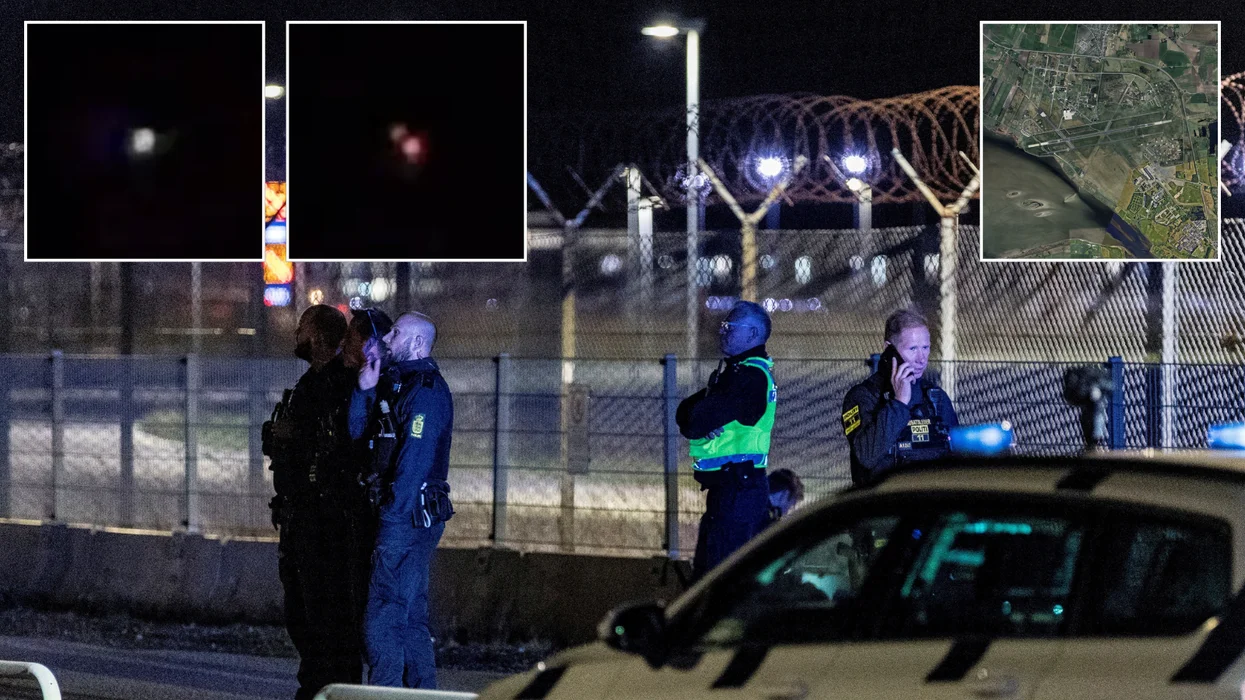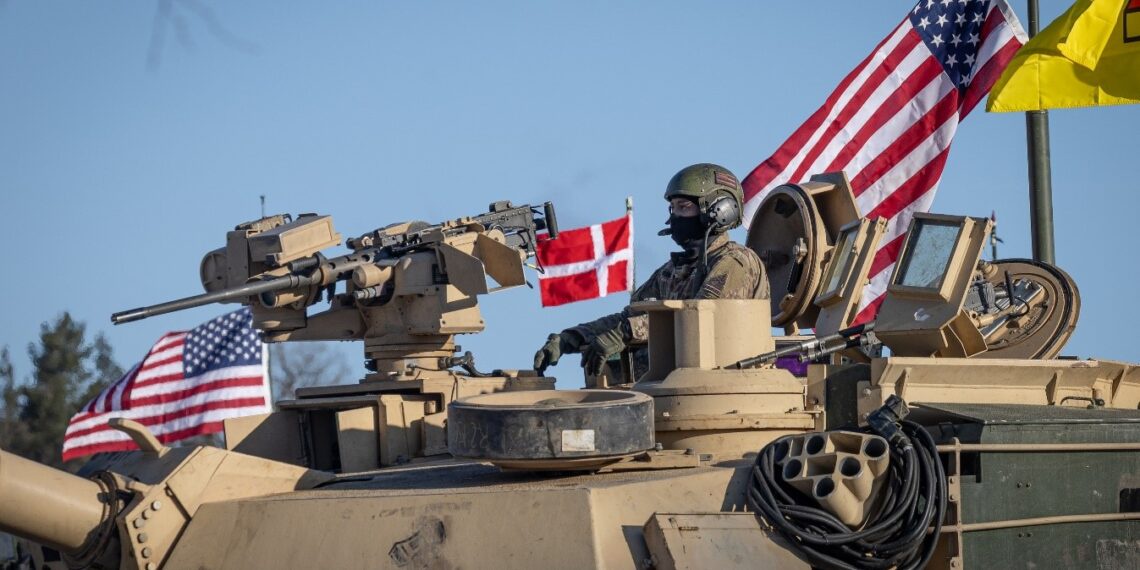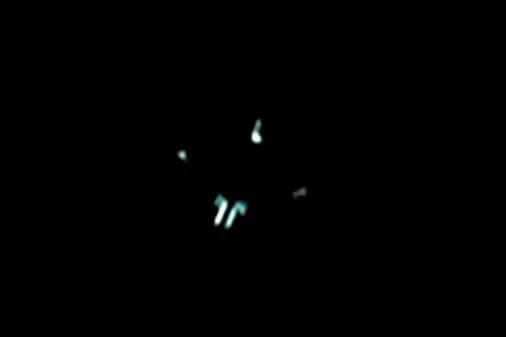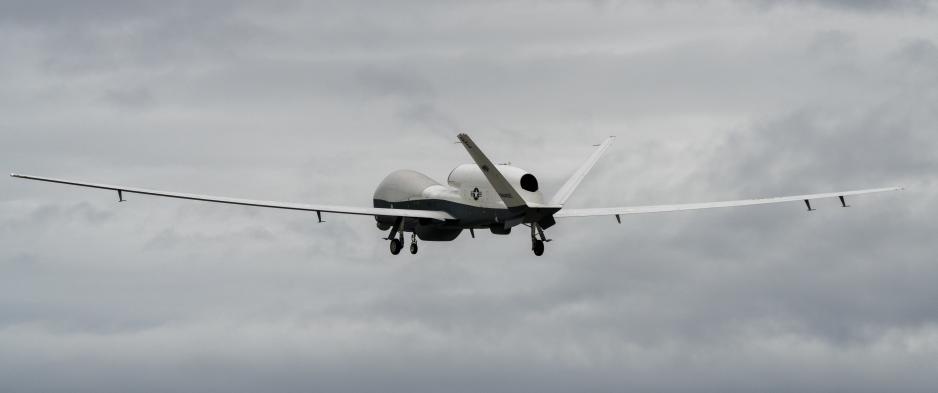Did a 2024 Forgotten Languages Post Foreshadow The Nordic Drone Crisis?

In December 2024, a strange post appeared on ForgottenLanguages.org titled “New Jersey kinetic strike test: Threat Analysis of sUAV-driven attacks.”
If you’ve ever visited that site, you know it’s one of the internet’s deeper mysteries. Some people think it’s an elaborate art project or coded experiment. Others believe it hides fragments of real research buried in invented languages and cryptic phrasing. The truth probably lies somewhere in between.
The post described what it said was a joint Homeland Security and U.S. Navy drill off the American coast, involving 62 drones launched from two vessels. They were said to have split into reconnaissance and strike groups, targeting water infrastructure and a naval base.

Around the same time, New Jersey saw a wave of drone reports that led to temporary FAA restrictions over 22 infrastructure sites (NBC News). Federal officials later suggested many sightings were misidentified aircraft, but the investigation stayed open. The overlap between that story and the Forgotten Languages post was hard to ignore for anyone familiar with the site.
Whether it was fiction, a leak, or something else, less than a year later similar scenes began unfolding across Denmark and Europe.
The Start of the Drone Crisis in Denmark

On September 22, 2025, Copenhagen Airport was shut for nearly four hours after air traffic controllers reported large drones over the runways (BBC). That same evening, Oslo Airport in Norway also closed due to drone activity (AP News).
In the days that followed, sightings spread to Aalborg, Esbjerg, Sønderborg, and Skrydstrup Air Base, home to Denmark’s F-16 and F-35 squadrons (Financial Times). Witnesses described coordinated formations, lights that switched off when approached, and objects that moved erratically across radar.
Prime Minister Mette Frederiksen called the incidents “a serious attack on Danish critical infrastructure” (The Guardian). Defense Minister Troels Lund Poulsen called them “systematic and coordinated.” Justice Minister Peter Hummelgaard compared the situation to how terrorism reshaped global security after 9/11.
By the end of the week, Denmark had banned all civilian drone flights nationwide (Reuters). NATO announced extra surveillance patrols over the Baltic, and France, Sweden, and Germany sent radar units and anti-drone specialists to assist (Politico). Still, not one drone was intercepted or recovered.
Then Germany’s Munich Airport was forced to close twice within 24 hours on October 3 and 4 after similar sightings (DW News). Police pilots confirmed seeing an object but could not find where it landed.
The Forgotten Languages Parallel

The similarities between the 2024 Forgotten Languages post and the European incidents are difficult to overlook.
Both describe, or in Denmark’s case are rumored to involve, drones launched from vessels operating in swarms and targeting critical infrastructure while being described as “impossible to intercept.” In both situations, officials have said there is “no evidence of foreign involvement,” though Russia has been a consistent point of speculation, with no proof to back that claim.
It could be coincidence. Or perhaps whoever wrote that post had prior knowledge of testing that was later mirrored on a larger scale. Either way, it blurs the line between fiction and classified experimentation.
The Overlooked June Agreement between Denmark and The U.S

Three months before the first Danish sightings, on June 11–12, 2025, Denmark’s parliament approved a defense deal granting the United States full access to three key Danish air bases: Karup, Skrydstrup, and Aalborg (EU News).
The agreement allows U.S. forces to store equipment, conduct operations, and station personnel in Denmark. It also gives them autonomous legal jurisdiction, meaning they operate under U.S. military law rather than Danish.
At the time, it was presented as routine NATO cooperation. But the timing now stands out. The same bases later became central to the drone sightings. If this were purely foreign interference, that overlap would be a huge coincidence. A more likely scenario is that these flights were part of controlled testing carried out under the framework of that new agreement.
A Possible Explanation
The Forgotten Languages post might have outlined the prototype for a modern hybrid defense simulation: a controlled stress test for coordinated aerial incursions. The activity over Denmark, Norway, and Germany could be the continuation of that test, scaled up across NATO airspace.
Since September, European militaries have gathered real-world data on radar blind spots, response times, and communication protocols. Every incident may be feeding information into an ongoing exercise.
In early October, Denmark’s defense minister even changed the language used publicly, saying the government would now refer to these as “aerial observations” instead of “drone activities” (DR). That small shift hinted that not everything being seen fits the profile of a conventional drone.
Why Denmark?

Denmark’s location between the Baltic and the North Sea makes it ideal for this kind of testing. It’s small, politically stable, and heavily integrated into NATO’s command structure.
The new U.S. base agreement provides a level of legal freedom that would allow advanced systems to be operated or tested without breaching Danish sovereignty. From a research standpoint, it’s a perfect controlled environment for observing how modern defense systems respond to persistent low-visibility threats.
The Official Silence
Government statements have remained uniform: no debris recovered, no confirmed operator, and no evidence of foreign involvement (Reuters).
That exact phrasing appeared in the Forgotten Languages post nearly a year earlier. It suggests that both the post and the real-world incidents might follow the same playbook: conduct the exercise, deny any outside connection, and keep the details contained.
The Timeline

Nov–Dec 2024, New Jersey and the Northeast U.S. A wave of drone sightings near power facilities and restricted zones leads to FAA restrictions. Federal briefings later cite misidentifications, but the investigation stays open.
Late Nov 2024, United Kingdom Drones spotted over USAF-linked RAF bases including Lakenheath, Mildenhall, Feltwell, and Fairford. Both the U.S. and U.K. confirm the sightings and open a criminal probe (BBC).
Dec 2024, Germany Unauthorized drones reported over Ramstein Air Base and nearby industrial areas (Reuters).
June 11–12, 2025, Denmark Parliament approves the U.S. base agreement granting American forces access and legal control over Karup, Skrydstrup, and Aalborg (EU News).
Sept 22–29, 2025, Denmark and Norway Drone incursions close Copenhagen and Oslo airports and continue nightly over multiple bases (BBC, AP News). Denmark bans civilian drone flights and NATO increases surveillance in the region (Politico).
Oct 3–4, 2025, Germany Munich Airport closes twice in 24 hours after suspected drone activity (DW News).
Across two years, the pattern moves west to east through NATO territory. Each phase becomes more sophisticated, but the public statements never change.
Forgotten Languages Leak or Larp?
Forgotten Languages has been puzzling people online for more than a decade. Entire Reddit threads are devoted to trying to decode it. Some see it as a complex art project exploring language and symbolism. Others think it’s a front for classified research written in disguised form.
Some even suspect it is both — an experiment in how people respond to half-hidden truths when they appear in the open. Whatever the purpose, the site has a strange history of publishing material that seems to echo real events months or years later.
The “New Jersey kinetic strike test” fits that pattern closely. It could be art, or it could be a leak written to appear artistic. Either way, it feels like an attempt to publish fragments of something real without naming it directly.
If that’s true, then the European drone wave isn’t random at all. It’s the continuation of a sequence that began in 2024.
Bringing It All Together

When you line up the events, a picture starts to form. The Forgotten Languages post about a “kinetic strike test” off New Jersey might not have been larp at all, but a leak in plain sight, of a classified NATO-aligned exercise. That same template seems to have moved step by step across allied territory in the year that followed.
It begins in the U.S, shifts to the U.K. and Germany, and then reaches Scandinavia just after Denmark granted the U.S. military access to its key airbases. Each phase escalates the scope, from minor sightings to full airport shutdowns, while every official statement stays nearly identical: “no evidence of foreign involvement.” Russia remains the theory most people reach for, but no proof has ever been shown.
That repeated language mirrors the tone of the Forgotten Languages text. If the site serves as a quiet leak for emerging defense methods, its purpose may be to release information in a way that looks like pure fiction while still recording them publicly.
Viewed through that lens, the drone incidents stop looking like a mystery and start to resemble a long-term systems test. The objective might not be confrontation, but measurement: to see how nations respond, how fast they detect, and how they manage uncertainty under pressure.
From the coast of New Jersey to the skies over Denmark, the same sequence plays out: launch, observe, deny, record. If that’s the case, the 2024 Forgotten Languages post wasn’t predicting anything. It was describing the start of an experiment that never really ended.
Check my other posts
Was Flight MH370 Teleported?
My detailed analysis of the plane and orb teleportation videos that some people have linked to the disappearance of MH370.
Why Is Skinny Bob Still Blinking at Us?
A look at the “Skinny Bob” alien footage, where I break down why it’s so strangely convincing, what’s likely fabricated, and why the videos still spark debates years later.
Carlos Díaz: The UFO with the Glowing Molten Skin
A detailed look at the Carlos Díaz “Ships of Light” UFO: the molten amber craft he photographed over Ajusco, how it seemed half-machine, half-alive, and why the visuals still rank among the most striking UFO images ever captured, hoax or not.
The “Flyby” UFO Footage: And Why It Refuses to Fade Away
A deep dive into the 2008 “Flyby” UFO video, where a disc-shaped object appears to following an airliner (or jet?), and why this short, grainy clip still sits in that uncomfortable space between what is could be a clever hoax, or genuinely a real UFO.
Best UFO Photos of All Time
A collection of some of the best and most famous UFO photos ever taken. Looking at who took them, how they’ve been debunked or defended, and why a handful of images still sit in that annoying space between “obvious hoax” and “if this is real, everything changes.”
Follow me on X for more updates.